#Etimolog��a
Explore tagged Tumblr posts
Text
ok let's try to split up the word to remember it
prosop - "face" in greek, like prosopopeia (a figure of speech in which an imaginary or absent person is represented as speaking or acting/personification.)
a - "lack of/no" in greek, like in asexual (individual with a lack of/little sexual atraction)
gnosia - "recognizing" in greek, like diagnosis (the medical thing)
3 notes
·
View notes
Text
One of the first things you will find out about Kazakh people if you come to Kazakhstan is how we are divided.
Not like politically(at least most of the time) but rather culturally.
Because you see. When Kazakh khanate was fully established, it was divided on 3 jüzes(regions) that looked like this:
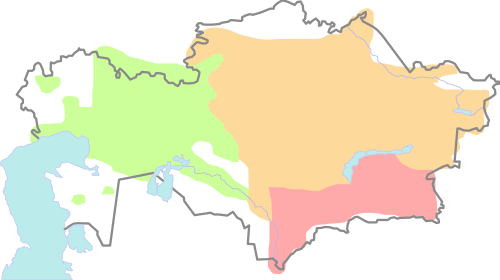
The red one is "Older" jüz, because this where the khanate initially began, the orange is "Middle" jüz as it was added next, and finally green is "Younger"(or "Smaller") jüz. All of these jüzes actually marked the territory where the tribes( and sub-tribes) that made those jüzes were traveling(nomading?).
And guess what! Against all odds(colonization, hunger, oppression) people still use those same jüzes and tribes(called ru) and sub-tribes today.
So for example someone maybe from middle jüz and be of nayman ru.
There is a lot of history and stuff connected to these concepts, like cultural heritage etc, but I would like to note one practical use of this system.
Both in the past in modern days people use these to quickly identify whether they are connected by blood and prevent incest! Cool huh? (also while ru is inherited from the father you still can just ask your mother for hers)
#kazakh culture#kazakh#kazakhstan#this was kinda hard to explain without oversimplifing it#so feel free to ask any questions#(except for my ru)#kazakh language#uhhh#also in modern day kazakh jüz is a hundred#but the actual etimology of the concept's name is unknown#also all of these are kinda connected to politicz#but i tried to avoid them in this one#i will shut up now
11 notes
·
View notes
Text
Madame Putiphar Read Along: Prologue
so it begins!! :D
(I am using the Valdemar Gótica edition in charge of Mauro Armiño, and the french text in gutenberg dot org)
Prologue
(The work is dedicated to L.P., Lucinde Paradol, an actress Petrus had loved since 1831)
The Poet sets the scene within his sombre heart. 3 Knights battle in it for its dominion, with ceasless fury. The Poet’s agonic cries only increase the knight’s bloodlust. The struggle will be lifelong, the Poet knows he has no choice in the outcome, and he knows the victory of one of the Knights will be his doom.
The knights represent a classic allegorical theme: the Three Ages of Man. But also three attitudes:
-libertinage and artistic glory,
-religious or intellectual seclusion,
-suicide, a clean death before the world and its ways forces the Poet to compromise himself
They also reflect in a general structural way, the vital paths of our characters. This pattern of the three possible paths, the three ages of men, is very ancient. In western culture we usually start with greek philosophers and matematicians considering it the perfect number, a number that encompassed the three narrative acts. It’s a recurring theme in most religions, fairy and folk tales, and mythology. It is also a number that seems to appeal to how our brains work, easing the comprehension of decades spanning events in narratives: in fairytales, we usually get 3 attempts at the same magical action before the character succeeds, in cinematic editing when a character coughs 3 times, we know the illness is grave enough to be deadly.
Closer in time to Borel, and worth mentioning since we know the author is one of his influences, there’s a Diderot book, The Skeptic’s Walk, that follows this same format. Finished in 1747 but like most of Diderot’s fiction, it was published posthumously, in 1830. In it a philosopher and his friends get lost in symbollic garden paths made of roses, thorns and chestnuts, each representing pleasures of the flesh ->roses, agonies of futile religious deprivation ->thorns, and finally chestnuts-> the wisdom of Philosophy. In a pretty anti-enlightenment move, Diderot’s character ends up running into “the type of blonde philosophers should avoid��(a line that seems out of a noir) an escapee from the path of the roses, she urges him to choose the palpable reality of sensual joys. He agrees, and occasionally picks sensuality over intellectual pursuits.
But enough preambles, let us present our allegorical knights:
Our first knight is “young, fresh and alert” He wears a steel corselet which glistens under a net of green cloth like a glacier glimpsed from between pines. His color, green like the verdant, fertile forest of Youth. But what this luscious fields hide is the frozen desert of the glacier. He is blond, beautiful, his eyes reflect love. His portrait is adorned with refernces to Spain: rides an Andalusian horse whom the the Knight of Youth makes shiver when manipulating his dagger and rondell like a vain toreador. (I don’t feel confident enough yet to try and say what Spain means for Borel, but his feelings towards Spain, the Spanish language and hispanic cultures are usually very positive)(so let’s say these allusions render him more appealing)
Enter the Second Knight. His characterization is compossed of references to christianity and the gothic: He looks like a reliquary. His donkey’s protruding bones make the animal resemble a rosary, covered with a shorn horse blanket that would catch the eye of an antiquary for it could be that of Queen Isabeau, travelling from Bavaria to France (her attire for the occasion was especially lavish)
He is fat, greasy, his breathing: laborious and loud. The anthitetic starving donkey carrying the heavy knight makes the spectator think of Shrovetide carrying Carnival on its back. However, the knight himself is made of anthiteses and contradictions. He looks like a glutton, but wears the attire of a penitent monk. (foreshadowing perhaps a priest in the novel who is not as chaste as he should be) He drags his habit through the ground, staining the holy clothes. He wears the hood because in order to “sell himself to the heavens” he has to conceal who he is or perhaps what he does. While he preaches virtue, sitting with his legs wide open (the expression Borel uses, à califourchon, is possibly composed of the ancient breton word for testicules) on his frail donkey, he is inspired by Sabaoth, the avatar of the Lord when leading the armies of the angels in Judaism. (there are many interpretations of this version of God and this name, and I am not well versed in Judaism, but from the context, he seems to be preaching virtue while sitting in a somewhat obscene manner, inspired by a war-like deity of another religion) He insults, curses and swears, arrogantly challenging his two rivals. These insults are backed by a huge mace. This second knight is completely drenched in blood and kisses a crucifix. To sum it up, he is older, dirtier, bloodier, associated with phallic and christian imagery, his appereance of weakness is decieveing. His attitudes span widely between the pious or the violent.
We meet, finally, the Third Knight. He is like the Comander in the Don Juan mythos, a man of stone. (based on the spanish folk tale of the “convidado de piedra”, the guest made of stone is the funereal monument of the Comander’s grave, who Juan Tenorio mockingly invites to dine after realizing he killed him when the Commander tried to avenge the rape of his daughter. The commander famously represents Death, shows up to Juan’s supper and invites him to dine with him in Hell instead.) He is horrifying and lugubrious. When hit by the other knights, he makes the sound of a hollow tomb. He is pretty much a grim reaper made of stone, he carries a scythe, which weeps streams of blood, carries a hunter’s trap from which a hanged man swings, grimmacing in a grotesque manner. Instead of a scimitar he carries a fisherman’s hook, from which tiny nets filled with worms and larvae hang. (is this a reference to the fisherman imagery in christianity? With an ironic twist because the paradise the stony knight offers is the absolute nothingness of the grave)
The 1st Knight, represents our tangible world. He attracts the narrator with crowns of flowers, and gallantly covers any puddles the poet finds in his path with his cloak, and wipes off his tears.
Now it’s the turn for the knights to address the Poet, and the language becomes erotic: the knight of Youth wishes the poet to give in to him completely, without restraints or remorse. He wants him to dive into his chest, abandoning himself to the oscilations of the vermillion waves within it. He is the joyous, smiling side of the world, which opens itself to the youth of the narrator, revealing a future of magic from which the days of his glory will spring. It’s the world of stars and dreams but also the world of prostitution and voluptuosness. The knight of Youth offers all the pleasures of the World, he will fullfil all of the Poet’s possible desires: voluptuos women, banquets, dances, glory.
The second knight with the kindly air, serious attitude and a face made sombre by loneliness, repressents the Cloister, where the love of the Lord emmanates in streams. The Cloister Knight claims the narrator for himself, because the tangible, sensual World is a mirage, everything in it vanishes like a dream, glory and the dream of posterity are only masks pride likes to wear. It is a vain entreprise to raise onseself a living monument, because the world forgets it all. Carnal love is impure. He must join the Second Knight in the Cloister to presserve the virginities of his soul. The Cloister is not only religious, if meditation doesn’t captivate him, he can always explore wisdom and science, but never Philosophy, (the enlightenment group were notably called the Philosophes, -a word that was used to design an intellectual- and they usually opposed organized religion) which defiles the wonders of Christ.
The third Knight, the eternal leverler, the implacable reaper, whom the narrator strokes and secretly honors, (the only one of the Knights the Narrator tells us openly how he feels about) is the Void: Death. As he is ancient, he adresses the Narrator as a child, and invites him to probe into his earthy body, to drown in his muddy, shadowy chrysalis. He forgets to harvest no grape of the vine of humanity, so why wait until pain has shattered his heart to blow out his candle? Death, the Knight claims, is Our Lady of Joy and Salvation! The grave: the Promised Land. He urges our Poet not to listen to the rhethoric of the Cloister, it promises rest but Man is trapped by his obsessions in it, like Saint Anthony, who suffered tempted like a Satyr in the desert: The Cloister is the same as the World without the posibility of fullfilment or satisfaction. Joy is only possible underground where one is safe from fake friendship, ambition or lost illusions. Absolute nothing is an abscense, a dead lightning, a botomless sea, a void without an echo.
Thus, capitulates the Poet, have combated the three knights for years without quarter. His heart is wounded by this constant struggle because it’s doubtful, religious, crazy, mondain, and unbelieving at the same time. But it’s a matter of time, one of the Knights will vanquish the others and the Poet will perish, a prey of either the World, the Cloister or the Void, and he has no choice in the outcome.
We know all the knights’s paths are fake, Youth appears fertile but conceals a heart of ice, Cloister preaches virtue and science but is a licentious, violent man, Death promises rest, but is shown torturing its victims. The Poet is harrased by the three incarnations of paths he knows are purposely deceitful, attempting to seduce him with mirages. Life, he tells us at the beginning of the poem, is pain in bloom, nothing in life is real or worthy, except perhaps this struggle, and the Poet’s realization that these options are deceitful.
#madame putiphar#long post#text post#rape mention#suicide mention#this poem is such a vivid experience#i love it#beautiful use of language you just picture everything in your head#also worthyof mention: the subversion of the champions competing for the heart of the princess trope#putiphar posting#please feel free to chime in#q#got the à califourchon etimology from larousse online but i cannot make the link work :p#sainteverge and counterwiddershins are doing this as well
12 notes
·
View notes
Text
Interesting comment I found on a video about the origins of Easter and the goddess Eostra.
Melissa Marsh
"Fun fact: it’s not nearly this simple. The celebration of Jesus’ resurrection is based on the date of Passover because that is a calendar-based Jewish holy day from thousands of years before Jesus and the time when the crucifixion supposedly happened.
So, you know, not based on a pagan spring deity.
When it began to become more widespread in Rome, it was never called Easter. It was derived from the word Pascha which came from “Passover”. In fact, many countries today still call it something that derives from Pascha. It is called Pâques in French, for example.
Where did this Eostra thing come from, then?
Welp, the Venerable Bede wrote that he thought there was a pagan goddess named Eostra that was tied to the Easter celebrations of that time (800AD if I’m not mistake ) but there is literally no other text extant that mentions this goddess. And no other proof.
In fact, it is much more likely that the specific word “Easter” which comes way way waaaaay after the Resurrection (Pascha) was celebrated in the first centuries after Christ, more likely is derived from the Old Germanic word “eostarun” which simply means “dawn.” Not the goddess of dawn. Just, you know, the word for the sun coming up. Which is why Easter is “Ostern” in German. Why did they call it this? A lost in translation snafu between Latin and Old High Germanic.
Were there spring deities and rituals being celebrated by many cultures at the same time? Obviously. Were people of newly Christianized countries highly encouraged (and often forced) to celebrate Easter/Pascha rather than other pagan spring deities or rituals? Absolutely! Religion has always been used as a convenient way to manipulate the masses and wield power.
Is there a much stronger argument to be made that Christmas was established to forcibly supplant local winter pagan celebrations? Also yes. There’s no actual confirmed date for Christ’s birth like there is for his death, since his death is tied to Jewish Passover. So it was a convenient way to get people celebrating how you wanted them to by swapping one holiday with another. Et voilà! Jesus was apparently born in December!
But the whole goddess Eostra thing is a fun, attractive load of conjecture with little more than vague references behind it.
Celebrate pagan spring rituals, or the Christian version of Easter, or just have fun with the Easter bunny and eggs. Or do a mix! We should all enjoy the day as we see fit. Just wanted to clarify the actual history of the holiday and the terminology, in case anyone wanted to know. 😉
Sincerely, someone with two master’s degrees focused
in Anglo-Saxon and Celtic literature, language, and history.
Because I kind of love this stuff."
2 notes
·
View notes
Text
today ive learned that the name of my city means "lobster hunter"

there's no lobsters here. never have been
1 note
·
View note
Text
I don't know why this just occurred to me but "family" LITERALLY comes from the latin word for servant!!!!! (famulus) and it means the property of the master (blood relatives, servants and slaves). so do with that
0 notes
Text


Image Description abailable on ALT text, courtesy of @scr-ppup, the lord and savior of image descriptions. Kudos are sent to this individual en masse!
Amabopuryie 【 ❁ 】 A term for those who experience child-like whimsy && joys when they experience gender/species/orientation/existential/identity euphoria. This may be used for whatever specific reasons, under whatever specific circumstances, so long as they are safe/non-harmful. This generally applies to feeling the childhood-adjacent whimsy AFTER the euphoria, but the two can be interconnected.
Etimology: "Ama" was inspired by "Amor" (which means love) to represent the euphoria. "Bopu" was chosen due to sounding silly to represent the child-like positive aspects. "Puryie" refers to how pure and gentle the feeling is.
The gradient colours represents childhood, while the gradient format represents mixed fruit juice/jelly. The light creams represent sunlight and fun/whimsy. The nuller colours represent the general euphoria.
The flower represents growth, blooming, childhood/one's inner child, joy/euphoria/whimsy, and general good themes. The light cresm fish-eye stripes represent cozy, fluffy blankets && plushies.
Made with { @floraeth } for THE DAYS NINE+TEN (LINK) of THE MOGAI TEAM-UP EVENT (LINK) by { @rwuffles && @vampitsm } — our team is "THE SWARM" (LINK) !!!
FLAG SYMBOL CREDITS HERE (LINK) !!!
Note: extremely self indulgent, as usual! oomphie teammate was mesmerized so i think i cooked here... please enjoy!
Anyone may use my terms and flags, however, I will block as I deem fit for my wellbeing (LINK). Please only post this to WIKIs with appropriate crediting towards me (&& others involved with my creation). Do not repost to any other social platforms, ONLY WIKI PAGES. Thank you!
Taglist: @radiomogai, @lovesse, @lunentity, @rwuffles, @kiruliom, @nqvo / @cheruvic, @inknoidd, @h-halos, @puppfie, @gender-mailman, @hypnosiacon, @losergendered, @rabidbatboy, @acronym-chaos, @daybreakthing, @gengernoway, @lawslinger, @local-maneater, @scr-ppup, @sevvys, @puriette-archived, @floraeth, @sylviestial, @idwl. Please, feel free to ask to be removed from/added to the list. (You're also welcome to ignore this!)

{ BANNER IMAGE DESCRIPTION IN ALT TEXT }
#mogai label#mogai flag#mogai coining#mogai flags#mogai gender#mogai genders#mogai identity#mogai post#mogai pride#mogai term#mogai terms#new mogai term#mogai#mogailiom#liom label#liom flags#liom coining#liom flag#liom gender#liom genders#liom identity#liom post#liom pride#liom term#liom terms#new liom term#liom#liomogai#mogai teamup#bright colors
88 notes
·
View notes
Text
while i basically agree my contrarian nature wants this to be a phantasmagorial synesthetic challenge for ALL last names to do this Black/White/Gray blend, in obvious and/or obscure etimologically bonkers ways. Like, Mx. Smith and Mx. Cooper get married, and become Mx. and Mx. OopsJustBarrelHoops or something.
if we want to stop the patriarchal concept of surnames being passed down the male line, we have a few options options that i’d be 100% fine with:
children get whichever surname is cooler, to eliminate uncool surnames over the generations
children get whichever surname is rarer, to achieve a utopian future in a few centuries where all surnames are more or less equally common
children’s surnames are randomly generated: say, heads for parent #1’s surname, tails for parent #2’s surname
parents pick the first names first, and then a court decides which surname fits it better. so if a couple named mr. madison and mr. liu want to name their daughter alison, she’ll get the surname liu, because alison madison sounds ridiculous
everyone stops having children right now
#etimologically bonkers#cant stop wont stop not spellchecking big words#Mx and Mx OopsJustBarrelHoops#cuz ones again im takin my queues from Capn Crunch cereal marketing#am i a linguist or am i a muppet i am a very muppety linguist
103K notes
·
View notes
Text
"accidentally calling your mentor dad/mom" but its a prank the toa mata play on the turaga after learning what the hell a parent is. they periodically say things like bye mom/dad without elaborating and the turaga are Going Insane trying to understand what the Fuck those words mean. are they insults. it feels like theyre insults. Nokama do you know what that means -> hard cut to Nokama in tears over several agori dictionaries because she can get the etimology but the meaning is completely useless bc it all reads like the entry in the first polish vocabulary for horse which had a description that said "everybody knows what a horse is". they cave in and ask some random agori and have the concept of parenthood explained and theyre even more confused. do the mata consider them their makers???? like equal to Artakha???? which doesnt make ANY sense?????? why would they do that anyways. is it like an insult because Artakha wasnt exactly involved in their growth. is it a compliment in terms of skill. is it a secret third thing. they are Losing Their Minds. the mata are having the time of their life
#bionicle#gresh voice uhhhh it means that youre their mom and dads. like. you know#turaga in tears voice NO WE DONT
35 notes
·
View notes
Text

⠀⠀⠀ NPD LESBIAN
⠀📻 🎙⠀ETIMOLOGY ; pronounced as just NPD lesbian . , Flag inspired by Freddy ’ s NPD gay flag { link here } .

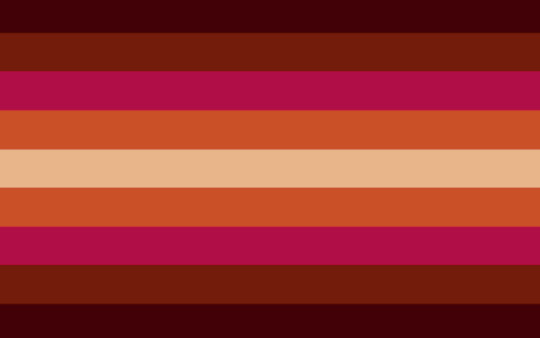


⠀📋⠀TERM EXPLANATION ; A simple flag for lesbians who have NPD { Narcissistic Personality Disorder } .

🗃️⠀REQUESTED BY : ANONYMOUS ,⠀⚙️ Term coined by this machine , Freddy .
TAGGING ; @accessmogai , @idescription & @mangous for image ID ➕ @sslowdeathh , @dollgirlsmind for the sillies .

#⠀🎰 】 ⌗ ┅⠀The MADNESS Never Ends.#⠀🪗 】 ⌗ ┅⠀Doing Good Is Boring.#mogai coining#mogai orientation#mogai flag#mogai term#mogai#liom coining#liom label#liom#NPD LESBIAN
80 notes
·
View notes
Text
speaking of misoginy.
its interesting how there are levels to this, level one could be considered as the baseline, background radiation levels of undeconstructed misoginy that one absorbs from a general patriarchal culture, where one might have deeply buried biases and what not. this is the everyday stuff that, while is nice to be mindful of, is not something that bears too much concern and everyone will inevitably have to some degree or another.
level two is like, being a thoughtless jerk, this is the bad boyfriend tier misoginy, when you kind of expect the women in your life to do all emotional and domestic labor for you, when you assume that the role of a woman is to be a mother or a wife, when you think the baseline expectation for any woman is to look attractive for men, when you think women dont have a right to abortion, etc. this is the misoginy that is easy to see and point out and for most reasonable people to see its bad.
and for the longest time i thought this was kind of it. i understood that the etimology of misoginy was "hatred or dislike of women" but i didnt take that literally, much in the same way i dont think a homophobe is literally terrified of a gay person.
but then i came to be exposed to the deepest depths of the red pill in its most current iteration and i was genuenly surprised that holy shit, these people genuenly hate women.
like the previous two cathegories i mentioned at least tend to appreciate women in a patronizing or objectifying way, this third group can barely tolerate their prescence. they regard them with the same hatred one has for dangerous animals or disgusting insects, which frankly kind of shocked me. they value having had sex with lots of women but seem to regard the necessity of interacting with women in order to achieve it as this onerous obstacle. to give you an idea of what im talking about, ive heard them say that is far better to live with lots of "high value men" as roomates because you can encourage and uplift each other as bros do than having to live with a woman in your house who would act as a catty vapid nagging parasite.
there is something so incredibly depressing about that. but i guess it is a little funny that we managed to recreate ancient greece so faithfully
25 notes
·
View notes
Note
It depends on the etimology
If something is spelt and pronounced the same but have wildly different meanings based on context are they the some word (with different meanings) or different words?
hi, welcome to semiotics,
200 notes
·
View notes
Text
୨ 🤍 ୧ — autoreself 。





✦ : an autospec label for when one is attracted to their real self in any way !
requested by : no one ) self indulgent .
etimology : auto + re(al) self

[pt: autoreself
an autospec label for when one is attracted to their real self in any way/end pt]
with different symbols under cut

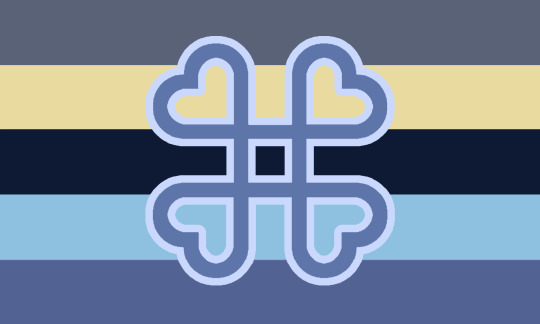


#୨୧ — heaven gifts。#autosexual#autoromantic#autospec#mogai collection#mogai gender#mogai flags#mogai friendly#mogai flag#mogai pride#mogai community#mogai safe#actually mogai#mogai#mogai blog#mogai coining#mogai identity#mogai label#mogai post#mogai term#mogaireal#pro mogai#orientation coining#auto coining#label coining
58 notes
·
View notes
Text
Ongietusio/Ongietunem
[ongietusio/ongietunem]


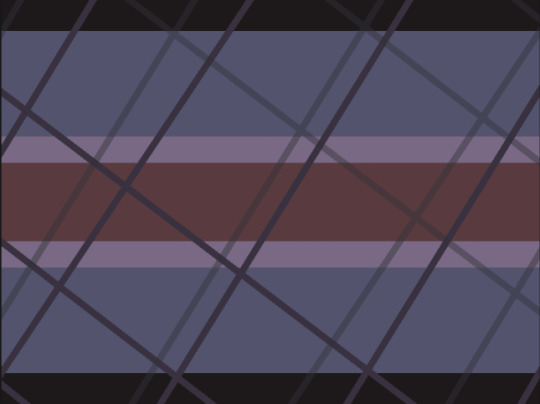

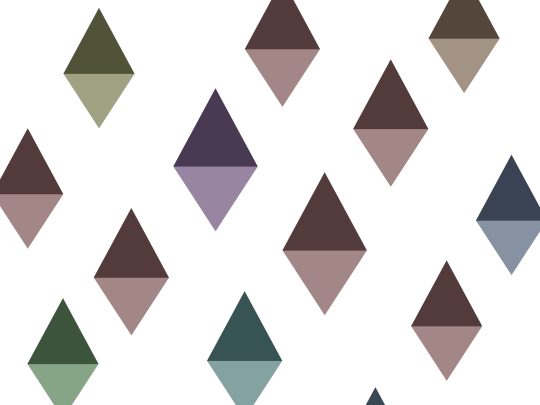

ongietunem "identities" are terms surrounding ones delusions effecting their perception of things - such as their body, reality itself, their environment, aspects of oneself or relationships and so on - as well as the disconnect one feels from reality due to these delusions.
this uncludes the episodic, non-episodic, self-aware and unaware.
for a term to be under the ongietusio umbrella, it means one has a hard time differenciating their perception of that specific thing from what is real and what they expirience or believe it to be, that one's perception of such is effected by delusions, be it brought on by psychosis, a schizospec disorder or other.

etimology:
ohn-gee-too-zio / ohn-gee-too-nehm
the "sio/zio" end is pronounced as a soft z, ee, oh sound.
ongietan+delusio / ongrietan+delusionem
taking the first 6 letters from ongietan, the old english word for perception, taking the last 4 letters from delusio, the secondary latin root word for delusion, and taking u+nem from delusionem, the "noun of action from past-participle stem of deludere" - delusiodere being the first root word for delusion.
ongietan, perception, relates to ones view and disconect from what they should be viewing/expiriencing. delusio/deludere/delusionem, delision, specifies and emphasises the disconect from what is real and what is actually being expirienced.

how to coin.
one can coin an ongietusio by using the prefix ongietu-, example, ongietucorse.
the following template is optional.
[x] is an ongietunem term/ongietusio relating to one's perception of [x] being affected by [x] delusion. this term aknowledges the disconnect between reality and one's expirience, it does not romantisize nor idealize this expirience.

ongietusio does not support
transid/transx, "transitioning" from reality to a delusion or any other variation of the phrasing, comparing neirological conditions, mental health or disorders/disabilities to being transgender in anyway, radqueers, discourse, ableism and general bigotry.
ongietusio actually supports
arissomei aldernic -cubi terms chronosian (non/anti-radqueer) queer stances people who have gone through traumatic/stressful events people who expirience atypical dysphoria, hallucinations and intrusive thoughts recovering radqueers recovering paras clusters a, b and c cripplepunk neuropunk lgbtq+ mogai/liom neo/xenic identities (researched) self-diagnosis

who can use ongietunem terms?
everyone in the "ongietusio actually supports" category
people with diagnosed, undiagnosed, proffessionally and self diagnosed delusions
anyone who expiriences a disorder/condition that causes delusions
anyone who anknowledges this term has boundaries and are not transid adjacent nor arissomei or aldernic replacements/alternatives.

please note intrusive thoughts can be a side effect of delusions but dont cause nor are they actual delusions themselves. having intrusive thoughts alone does not qualify as this specifies one's entire perception of things being disconnected from what is reality.
also note this is not a term made just for fun, but to actually aid in recognizing the disconnect, aknowledge it and spread a bit more awareness about the kind of expiriences people wth delusions may have. it is a serious topic about mental health, not an aesthetic or choice.
thank you.
id's are all in alt text.

links/tagging
about delusions(link)
anti rq archive(link)
Arissomei(link)
Aldernic(link)
Chronisian(link)
@acetrappolaswife, @hewasanamericangirl, @docsfallfromgrace, @sage-writes-n-coins-mogai, @archival-arrival, @antiradqueer, @arissodic-archive, @objectumluv, @clusterrune



#flag design#mod cass#flag blog#my flags#flag coining#flag making#term coining#coining post#ongietusio#ongietunem#arissomei#aldernic#anti rq 🍓🌈#anti rq#anti transid#ant transid#anti transx#antitransid#antitransx#anti radqueer#anti radshit#antiradqueer#delusional#delusions#actually delusional#psychotic#actually psychotic#schizospec#chronosian#anti radpara
93 notes
·
View notes
Note
I figured google translate isn't Exactly a reliable way to find name meanings but
Upon googling there is exactly one (1) person on names.org who submitted "timeloop" as the meaning of the name siffrin 💀 seems perfectly peer reviewed and reliable fr
After some extra googling and digging through name meanings websites I can literally not find a SINGLE other source saying this is the meaning of this name
I have no idea why I googled this or give a shit as I don't even know which character (I'm assuming?) This is about and I Do Not go to whatever fandom this is related to. And yet I just had to know. But I can't really find a definitive answer to what the name means either, because every other site just says some shit and they all differ. It just really PROBABLY isn't "time loop". Sorry for the long ass ask 👍 I should be asleep
the name is a play on sisyphus (on the account of them being stuck in a time loop) (a cycle, a repeating pattern (<- rain world reference))
so if you wanted to actually know the meaning you'd need to look at the etimology of sisyphus, but as far as a cursory search informs me people are a bit unclear on the original meaning
my best guess why someone would submit 'time loop' as the meaning of the name is that yknow, siffrin is the main character of a time loop game
#in stars and time#isat#also i would totally suggest you check out that game it's really fucking good
22 notes
·
View notes
Text
Been a while since i interacted with anything hp related, but yeah,,
Thats because of the syllabic rythm, the same reason we say salt and pepper instead of pepper and salt. Try saying this:
Salt⬆️and⬇️Pep⬆️per
Pot⬆️ter⬇️Mal⬆️foy⬇️
Versus,
Pep⬆️per⬇️and⬇️Salt⬆️
Mal⬆️foy⬇️Pot⬆️ter⬆️
Feels weird, doesn't it? Language always favors different syllabic rythms, this is a very oversimplified explanation (hence why im not talking abt why the "ter" syllabus changed intonation)
Malfoy-Potter sounds right but Potter-Malfoy feels right. Like.
28 notes
·
View notes